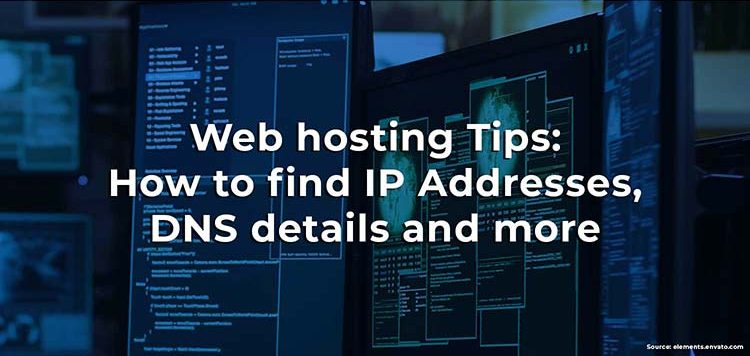Most companies these days have their own website; and they should. However, while several of these site owners and employees are able to give you the web address, many times they have no clue where the site is hosted.
That’s because several persons hire web developers or had friends or relatives build their websites and do your domain name registration. So when asked who hosts their website, they are completely blank. For most persons it’s all about having a website and email hosting. But, knowing which company stores the files for your website is important and can impact the overall performance of your site.
Table of Contents
6 Things to know when you host your website
This article will answer that question of, “do I really need to know where my website is hosted?” It will also explain how you can find your IP address and DNS. But, first, get familiar with what DNS and an IP address actually are.
1. What is an IP address?
Have you ever wondered how computers recognize and communicate with each other? They do this on the internet by using a series of numbers, known as an Internet protocol (IP) address.
An example of an IP address is 108.247.684.825. Can you imagine if humans had to memorize similar series of numbers for all the websites we visit? No, well neither can I. Such a task is impractical an impossible well at least for most of us. That’s why nameservers came into play. Nameservers make it possible for you to view websites using their domain names instead of their IP addresses. A domain name refers to the name of your website.
2. What is DNS?
A Domain Name System (DNS) operates much like a phone book for computers. It converts domain names into machine-readable IP addresses. This is what allows users, like you and me, to access websites by simply typing a domain instead of an actual IP address.
Essentially a Domain Name Server (DNS) translates a domain name to an IP address, so you load the correct server based on the domain name requested.
Almost all traffic on the Internet depends on the DNS servers. Most Internet Service Provider, (ISP) have their caching DNS server to lessen network load.
Just in case, you are a little confused. Simply put, a DNS is like putting a contact into a phonebook. While the nameserver represent that phonebook, storing DNS records that you can look up later.
3. How to find your IP address
You can find out who hosts a particular website by using one of the following:
- WHOIS— this tells you who is hosting a domain and where it was registered. It also helps you to find what the Domain Name Server (DNS) is.
- MX Record— this is a Mail eXchange Record that allows an email to live on a server other than the one hosting the website.
4. How to find your Nameserver
You can easily check your nameservers using Whois website. It is publically accessible. Just type in your domain name and it will take you to a page with information including the registration of your domain, your registration status and your website’s Nameservers.
If you have a UK domain name, check your website’s nameserver with Nominet WHOIS. If you are searching for Top Level Domains ending in .com, .net, etc, do so using ICAN WHOIS.
5. How to find out where your email is hosted?
If you’re using a Mac or Linux machine, you will find some great command-line tools such as dig and host that can quickly reveal MX records. Here are two examples:
Open the terminal and type dig aaronreimann.com mx +short. It will return the MX records.
If aren’t comfortable with command line or using Windows, you can use a few web tools to make these procedures more user friendly. One of the most popular is MX Toolbox. It will return MX records giving you its best guess at where the email is being hosted.
6. What is Domain Name Privacy and do I need it?
Web hosting services and domain name registrars provide Domain name privacy protection. The purpose is to help prevent spamming and exposure of personal information about a domain’s registered owners.
You have to pay for this add-on service, which helps in the stopping of email addresses abuse and other publicly available WHOIS data. Domain privacy protection gives users a sense of security. However, buying domain privacy protection is a choice, not a must-do.
To register a domain, simply provide the domain registrar with basic contact information that includes your legal name, address, phone number, and an email address. This information is to confirm that you are the domain owner of record. It will be entered into a public database called Whois. This will help with answering the question of who is in control for this domain name or IP address.
The Whois database is among several databases that hold internet registrant data. The Internet Corporation (ICANN) accredits these kinds of databases for Assigned Names and Numbers.
ICANN is a non-profit that maintains and coordinates IP addresses and DNS. It works to ensure that every entity on the internet has a unique identifier and is accessible by computers everywhere in the world. That is the reason everyone who registers a domain name has to provide legitimate identification to an ICANN database.
By default, all the data you submit when registering your new website becomes available for public access.
Summary
We hope you have learned quite a bit. Remember, even if you had your website created years ago by a family member or a friend, it’s important that you know where your website is hosted. There are a lot of tools out that can help you to figure this out. Some of them are command line, some online. With a combination of these methods, you’ll find the answers you need.
Knowing where and who hosts your website greatly affect its performance.





